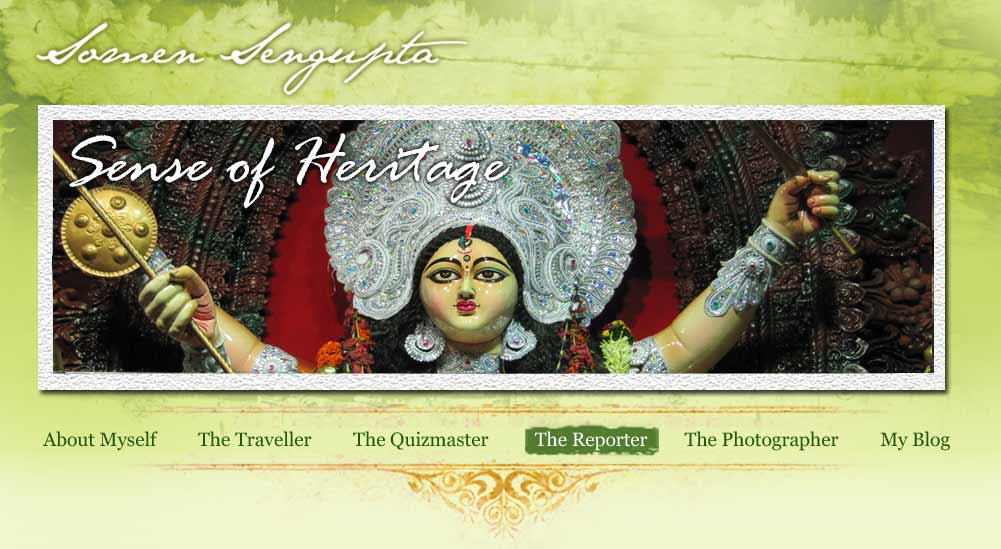Sense of Heritage
The Statesman – 10th October 1999
Nearly two centuries ago, Calcutta was a city bound within the north and central area. The eastern side was full of moorland and jungle. There were settled areas around settled areas around Beliagata and Narkeldanga. It was mainly limited beside the Maratha Ditch and Greek Cemetery.
Barwari Durgotsav or community Durga puja, then was not a part of the city’s culture. Indeed the first boom in community puja came in early 1920 after a series of communal riots. Much before this, a community Durgotsav started at the eastern part of the city, which did not for a long time, capture the city’s imagination.
This puja started at an atachala Sitala Mandir’s compound which was situated beside a road connecting Beliaghata main road and Narkeldanga main road. The initiative was taken by some local youngstars. Within a couple of years the palace was changed to one situated near a market. That was used for the Charak Utsav of Charak Danga (danga means fair). So the Durgotsav was renamed Charakdanga Barowari Durgatsav and the road was also named Charakadanga road.
Gardually two rich families got involved in this puja. They are were the Bose and Sinha families. In the Twenties itseld, a permanent Durga dalan with a tin foor was constructed bu Gyanendranth Sinha. This ties when a devasting strom reduced the dalan to dust. It was Santu Sinha and his friends. Ram Ckhakarvarty. Paresh Chakravarty and the like carried on this puja at the time of political tumult in the Forties.
Electric light were first used in the late Thirities. Before that the humble hazak was used for illumination. May old-timers claim that in 1938 the then Congress President, Sunhas Chandra Bose, came to this Durga dalan after attending a political meeting nearby. In 1946 when there was an emotional wave blowing over the nation because of the INA war prisoners’ trail, Captain Laxmi Saigal paid her visit to this dalan.
In 1946 when the Great Calcutta Killing, broke out, Beliaghata was one of the wrost victims. Charakandanga Durgotsav became a place of unity among all communities and it’s popularity increased rapidly.
In the post-independence ear the puja became a club controlled event. The local Dutta family undertook the responsibility for some years and after that the club took it over. This was a gloomy period as mass participation, a characteristic of the puja, dropped down. The old festival almost petered out.
From 1991, members of two local clubs namely Uday Sangha and Beliaghata Ankur came forward. Amazingly they were able to bring back the old festival mood. The puja again become a mass event. The dilapidated Durg dalan was repaired and all the sarees which were received as pranami are now distributed among the poor people.
“This has become a family puja for all of us…”, says Shankar Dey one of the committee members. Avijit Sengupta, secretary of last year’s committee, says that this puja has a dignified place in Calcutta’s cultural history. “Do you know that our puja is featured in the puja guide in the Internet,” he beams.
This year also there will be joyous celebrations. This is indeed a puja where extravaganza has bowed down to dedication and a sense of heritage. |



